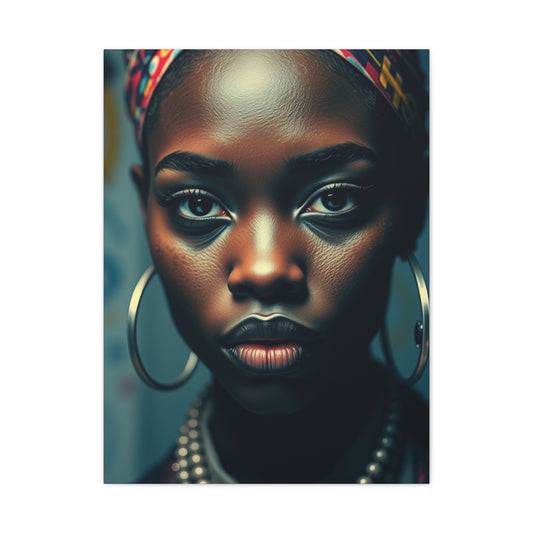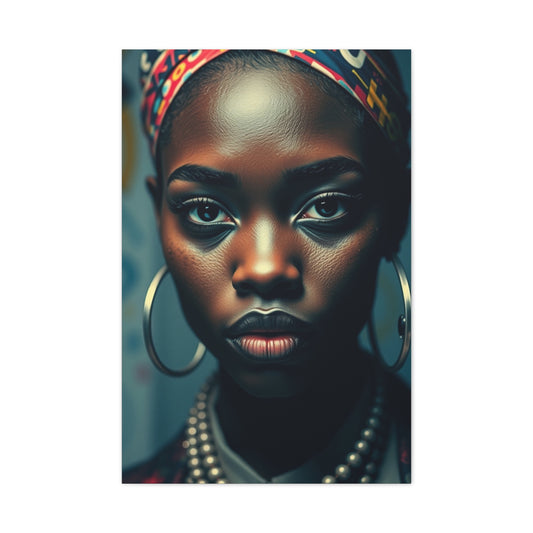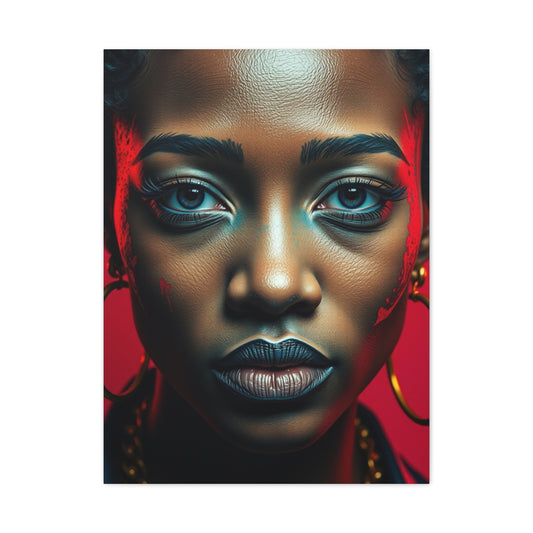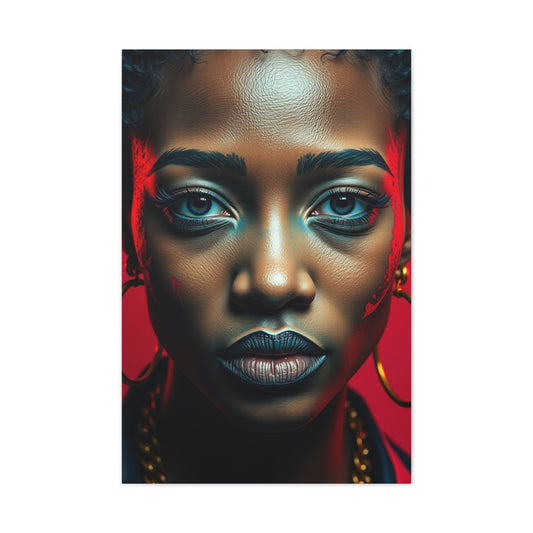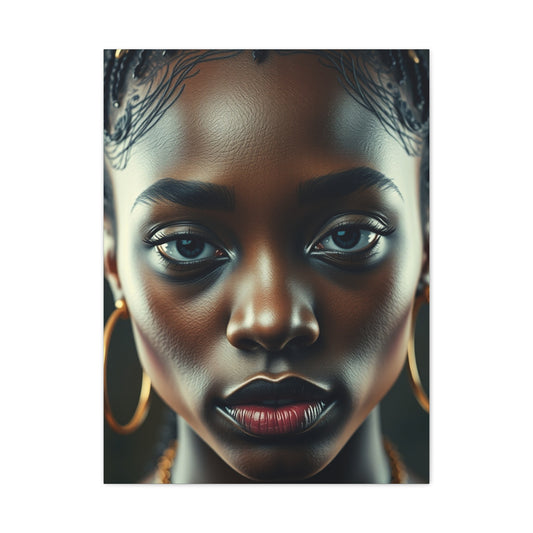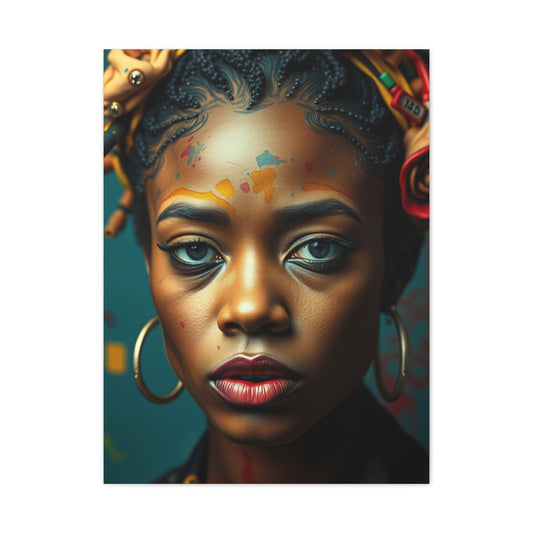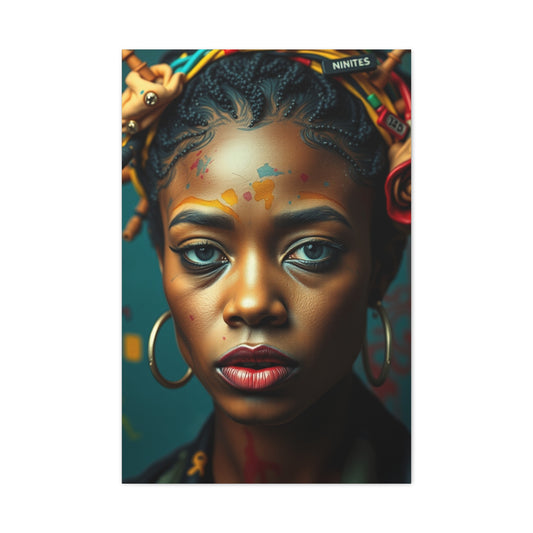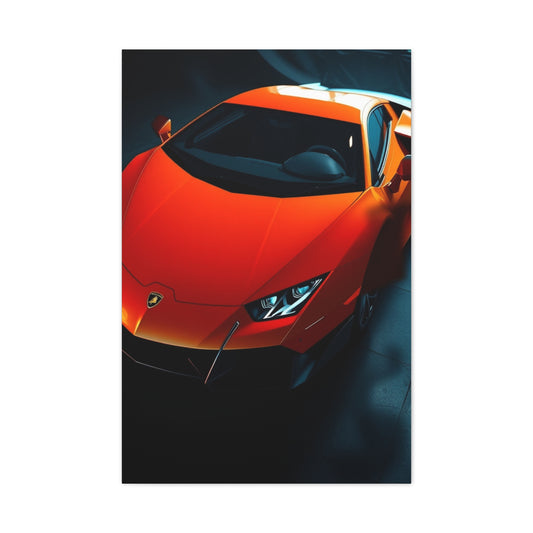Adobe Photoshop continues to maintain its supremacy in the digital image editing realm through continuous innovation and advancement. For over three decades, this powerhouse application has consistently evolved, introducing groundbreaking features while simultaneously refining existing capabilities. The software maintains its competitive edge through two fundamental approaches: enhancing established tools such as selection mechanisms and healing instruments, and regularly unveiling revolutionary features that transform the creative workflow.
Among the most eagerly awaited additions to Photoshop's arsenal is the sophisticated sky replacement functionality. This transformative tool represents a significant leap forward in automated image compositing, offering photographers and digital artists unprecedented convenience in atmospheric manipulation. The implementation of artificial intelligence-driven technology has elevated this feature beyond traditional manual compositing techniques, delivering results that were previously achievable only through extensive expertise and time investment.
The introduction of automated sky replacement addresses a longstanding challenge in digital image enhancement. Previously, photographers faced labor-intensive processes involving complex layer masking, precise selections, and meticulous blending to achieve convincing sky substitutions. These traditional methods demanded considerable technical knowledge and patience, often resulting in inconsistent outcomes that betrayed their artificial origins.
Contemporary digital imaging demands efficiency without compromising quality. The modern photographer operates in an environment where rapid turnaround times are essential, yet visual excellence remains paramount. This new sky replacement capability bridges this gap by providing professional-grade results through streamlined workflows, enabling creators to focus on artistic vision rather than technical execution.
The ethical implications surrounding sky replacement warrant thoughtful consideration within the photographic community. The manipulation of atmospheric conditions raises questions about authenticity and artistic integrity. However, the distinction between creative enhancement and deceptive alteration often depends on intent and context. When used as a tool for artistic expression or to overcome technical limitations during capture, sky replacement serves as a legitimate creative instrument.
Many scenarios justify the utilization of sky replacement technology beyond mere aesthetic preference. Photographers frequently encounter situations where optimal exposure settings for foreground subjects result in overexposed or underexposed skies. Similarly, challenging weather conditions or time constraints may prevent capturing the desired atmospheric conditions during the initial shoot. In such instances, sky replacement becomes a corrective tool rather than a deceptive practice.
Understanding the Revolutionary Sky Replacement Interface
Accessing Photoshop's sky replacement functionality requires navigating to the Edit menu and selecting the Sky Replacement option. This action launches a comprehensive interface designed to provide intuitive control over every aspect of the replacement process. The interface represents a culmination of user experience research and technical innovation, presenting complex functionality through an accessible visual framework.
The initial interface presentation immediately demonstrates the power of underlying artificial intelligence algorithms. Upon selecting any replacement sky, the system automatically analyzes the source image, identifies foreground elements, creates precise masks, and applies initial blending adjustments. This instantaneous processing showcases years of machine learning development focused on understanding image composition and atmospheric integration.
The dropdown menu system organizes available sky options through logical categorization, facilitating efficient selection based on desired mood and atmospheric conditions. Pre-installed options span diverse categories including serene blue skies, dramatic storm systems, and warm sunset variations. Each category contains multiple options, providing extensive creative possibilities without requiring external resources.
Custom sky integration expands creative possibilities exponentially by allowing users to incorporate personal atmospheric captures or purchased stock imagery. This flexibility ensures that the tool adapts to individual creative visions rather than limiting users to predetermined options. The browsing functionality seamlessly integrates with local file systems and Adobe Stock subscriptions, creating a unified resource access point.
Organizational features enable efficient management of expanding sky libraries through custom grouping capabilities. Users can create thematic collections, seasonal arrangements, or project-specific compilations, streamlining future workflow efficiency. The thumbnail sizing controls allow interface customization based on individual preferences and screen real estate considerations.
Advanced Customization and Positioning Controls in Sky Replacement Tools
In the constantly advancing field of digital image manipulation, sky replacement has emerged as a game-changing technique, enabling editors and photographers to transform dull or flat skies into dynamic, vibrant backdrops. These tools, often powered by artificial intelligence, offer automation for speed and convenience. However, the true value of a sky replacement system lies in its advanced customization and positioning controls. These controls empower users to go beyond automation and create masterfully composed images with nuanced realism and artistic precision.
Sky replacement isn’t just a corrective tool; it’s a creative canvas. By providing extensive manual override options, users can refine placements, correct inaccuracies, and build scenes that elevate the emotional impact of an image. Whether used in travel, real estate, fashion, or landscape photography, the ability to control the placement, masking, and visual harmony of the sky is a vital feature for producing high-caliber visual work.
Repositioning Beyond Default Placement
Automated sky replacement tools rely on algorithms to detect the sky and replace it with a chosen preset or custom sky image. However, this default placement rarely accounts for artistic composition, subject alignment, or visual weight. That’s where repositioning functionality becomes invaluable. With manual control over sky placement, users can interactively drag the sky image to find the most compelling and natural fit for the overall scene.
This feature enables precise alignment of cloud patterns, sun positions, or color gradients with key foreground elements. For instance, positioning a dramatic cumulus cloud above a mountain peak enhances the visual hierarchy, guiding the viewer’s eye through the frame. Similarly, subtle shifts in the horizon line can dramatically affect balance and depth perception.
Repositioning also caters to the diversity of compositions. A centered building, a tilted horizon, or a subject leaning toward one side demands a tailored sky placement to preserve harmony. Default positions often fail in asymmetrical layouts, whereas manual positioning tools adapt to the creative needs of the image.
Move Tool and Interactive Real-Time Adjustments
The move tool provides direct manipulation of the sky layer within the image boundaries. Upon activation, users can interact with the sky just like any other object—dragging it across the canvas to explore various placements. What distinguishes this tool is its responsiveness and real-time feedback. Every adjustment is reflected instantly, offering a live preview that allows editors to evaluate the visual outcome without waiting for rendering.
This immediate interaction accelerates decision-making and allows for creative experimentation. Want to place the sunbeam slightly to the left to highlight a statue? Or bring in more cloud texture on the right side to fill negative space? The move tool makes these changes intuitive and fast. This hands-on adjustment capability removes the rigidity of automation and introduces flexibility that aligns with professional editing workflows.
Real-time previews help prevent mismatches in lighting direction, perspective, and natural gradients. By seeing the sky replacement in action as it's manipulated, users can intuitively identify what feels natural and what feels artificial. This visual feedback is essential when trying to create emotionally evocative imagery that resonates with authenticity.
Manual Mask Refinement for Precise Edge Control
Even the most advanced AI models can struggle with complex edges, especially when the foreground includes intricate details like tree branches, reflective glass, lace fabric, or flowing hair. These challenging edge conditions often result in visible masking errors such as halos, bleeding, or inconsistent transparency. That’s where manual mask refinement steps in as an essential tool.
Using a brush-based system, users can take full control of the sky mask. This brush allows for adding to or subtracting from the mask, giving the editor pixel-level authority over what parts of the image are designated as sky or foreground. With variable brush size, hardness, and opacity, users can navigate tight spaces and delicate edges to produce highly accurate masks.
This becomes especially useful in high-contrast or backlit images, where the automated mask might misinterpret shadow areas or soft edges. Manual mask refinement ensures that foreground elements maintain their integrity and that transitions between sky and subject remain natural and undetectable under close inspection.
For architectural photography, where rooflines, antennas, or window reflections intersect with the sky, manual correction ensures that each line remains crisp and correctly isolated. For nature photography, it preserves the natural textures of leaves, feathers, or fur without compromising their fine detail.
Sky Brush Tool with Familiar Editing Dynamics
The sky brush tool has been designed with familiarity in mind, reflecting the behavior of standard brushes found in professional editing software. Editors accustomed to using brush tools in traditional workflows will find the transition seamless, while newcomers benefit from an intuitive, approachable interface.
The tool supports standard brush dynamics such as adjustable size, feathering, and flow. Additionally, the inclusion of modifier keys like Alt or Option allows users to switch between adding and subtracting areas from the mask without switching tools. This consistent behavior aligns with industry conventions, reducing the learning curve while offering the flexibility needed for precision work.
More importantly, the brush is optimized for sky-related transitions. It understands the typical characteristics of sky-to-object boundaries and applies a smoother gradient in blending areas. This makes it easier to clean up mask artifacts in complex compositions without introducing unnatural cut lines or transparency issues.
The sky brush also supports pressure sensitivity when used with tablets, allowing for an even greater degree of control. This proves particularly useful when blending the mask edge around organic shapes or when working on high-resolution imagery where subtle transitions matter.
Edge Inspection and Quality Control at Full Zoom
The initial view of a sky replacement may seem flawless, especially when viewed at screen resolution or in small formats. But true quality control demands inspection at full magnification. This is where subtle flaws become visible—improper edges, color fringing, or residual artifacts left behind by the automated process.
Magnified inspection reveals whether the mask has held up under scrutiny. A tiny blue edge around a tree, a soft halo around a building, or a misaligned cloud pattern can break the illusion of realism. Professional editors always take the time to zoom in and analyze every corner, edge, and transition zone before finalizing the composite.
Advanced sky replacement tools often include tools like edge blending, decontamination, and feather controls to assist in these refinements. However, no amount of automation replaces the human eye when it comes to evaluating believability. Manual corrections made at 100% zoom ensure the result meets the highest visual standards.
This level of detail becomes especially important in commercial applications where images are printed in large formats or displayed on high-resolution screens. Without edge fidelity, the illusion collapses, making the work appear amateurish or digitally altered in an unflattering way.
Creative Potential and Expressive Sky Integration
Beyond technical correction, sky replacement offers expansive creative potential. Advanced customization tools allow users to explore artistic interpretations, mood shifts, and visual storytelling in ways previously impossible. By controlling the placement, color tones, and atmospheric elements, the sky becomes a central character in the image’s narrative.
A daytime cityscape can be transformed into a moody twilight scene. A flat ocean horizon can become an epic stormy backdrop. The creative possibilities multiply with access to diverse sky libraries and the ability to fine-tune every aspect of the sky’s integration.
In fine art photography, surreal compositions become achievable through blended skies, layered textures, or even celestial overlays. In conceptual work, the sky can reflect the subject’s emotions—serenity, chaos, isolation, or joy—all shaped by how the clouds move, how the light bends, and how the background complements the foreground subject.
Custom color grading can further enhance this integration. With control over sky brightness, temperature, and saturation, the replacement can be harmonized to the overall color palette of the image. This makes the final result not only believable but visually cohesive and emotionally resonant.
Manual Control as the Key to Professional Results
Despite the ever-improving capabilities of artificial intelligence in image editing, the need for manual control will never disappear. In fact, manual overrides, repositioning, and refinements are what distinguish a casual edit from a professional-grade composite. The combination of machine speed and human judgment creates the most effective workflow.
Advanced customization tools are not merely for correcting mistakes—they are for crafting vision. From adjusting the exact position of the sun to manually blending the edge of a rooftop, every detail matters. These tools provide the precision needed to elevate simple edits into compelling visual stories.
For professionals and enthusiasts alike, mastering these customization options turns sky replacement from a mechanical feature into an expressive art form. The result is not just a better sky—but a better image.
Mastering Seamless Blending Techniques in Sky Replacement
Sky replacement has evolved from a niche editing technique to a widely adopted method in digital photography, cinematography, and commercial imaging. However, the pursuit of realism in sky composites involves more than simply overlaying a new sky onto an existing image. True visual cohesion is born from seamless blending—where the inserted sky not only looks natural but feels organically integrated into the scene. This requires careful manipulation of tone, light, color temperature, edge fidelity, and atmospheric logic.
The principles of natural atmospheric integration govern whether an image resonates as authentic or appears digitally manipulated. Achieving this seamlessness demands proficiency in blending techniques that mirror the subtle interactions between foreground elements and the sky in real-world conditions. From the minute transitions at the horizon line to the overall harmony between light direction and color grading, each adjustment plays a vital role in sculpting convincing realism.
The Role of Atmospheric Harmony in Sky Integration
At the heart of seamless blending lies the concept of atmospheric harmony. This principle suggests that all elements within an image should reflect a shared atmospheric condition. When replacing a sky, one must consider the existing ambient lighting, the interplay between color temperature and shadows, and the influence of distance on clarity and contrast. These components form the visual language of atmosphere and must be respected during integration.
Photoshop and other advanced editing tools provide specific blending controls that replicate the effects of atmospheric haze, diffused light, and chromatic gradations. For instance, a sunset sky cannot simply be inserted into a midday photo without recalibrating the foreground lighting to match the golden hues. Similarly, inserting a clear blue sky into a foggy landscape demands more than a color swap—it requires diffusion, desaturation, and haze simulation to make the scene feel believable.
A fundamental aspect of this integration involves adjusting for atmospheric perspective, a visual cue that renders distant objects less saturated and lower in contrast. If a newly added sky ignores this rule and presents high-contrast clouds near the horizon, it breaks the illusion of depth. Successful sky replacement hinges on honoring these subtle atmospheric truths.
Edge Masking and Transition Refinement
One of the most crucial elements of seamless sky replacement is the treatment of the transition between the new sky and the existing foreground. Even with AI-assisted selection tools, complex silhouettes like tree branches, architectural detail, or human hair can present challenges. Refinement tools become the safeguard against unnatural cutouts and edge halos.
Edge manipulation tools offer several methods of adjusting the transition zone. The shift edge feature allows users to nudge the boundary of the mask either inward or outward. This is particularly useful when the automated edge selection includes too much sky bleed or misses subtle boundary elements. With precise control, editors can reclaim or remove edge pixels to restore natural outlines.
Fade edge functionality simulates the soft visual roll-off that occurs near the horizon in real-world scenes. In nature, this softening is a result of light scattering, dust particles, and atmospheric density. When manually replicated in post-processing, this effect helps anchor the new sky within the scene. It prevents abrupt cutoffs and creates a visual gradient that mirrors natural phenomena.
In addition to these tools, feathering, contrast refinement, and edge decontamination further enhance transitions. These subtle micro-adjustments eliminate signs of digital tampering, especially when images are examined at full magnification.
Brightness and Temperature Control in Atmospheric Matching
To ensure believable sky integration, it’s imperative to harmonize both brightness levels and color temperature between the sky and the rest of the scene. A mismatch in these attributes often signals artificiality. Thankfully, sky-specific adjustment controls offer the necessary parameters to make these corrections with precision.
Brightness adjustment governs the overall luminosity of the sky. It should correspond directly to the lighting intensity in the original photograph. For example, a low-light foreground should not be paired with an overly radiant or high-key sky. This incongruity disrupts the spatial lighting logic and draws immediate attention to the alteration. Calibrating brightness helps maintain visual consistency and aligns light direction with shadow behavior across the composition.
Temperature adjustment, on the other hand, deals with the overall color cast of the sky. Whether aiming for a warm golden-hour look or a cold winter sky, adjusting temperature influences how light bathes the entire frame. A warm-toned sky infuses the environment with yellow, orange, or red hues, while cooler skies produce blue or cyan tints. Matching the sky’s color cast to the scene ensures tonal consistency and mood synchronization.
In creative edits, manipulating these parameters also opens pathways for mood alteration. A standard landscape can be reimagined with a dramatic, dusky feel or transformed into a soft, pastel sunrise by subtle shifts in brightness and temperature.
Scaling the Sky to Fit Composition and Perspective
Another vital blending consideration is the relative scale of sky elements, particularly cloud patterns and celestial features. The sky must appear proportionally accurate in relation to the scene’s perspective. Inconsistent scaling can distort realism and generate visual confusion.
Scale adjustment allows editors to enlarge or reduce the sky layer to better match the composition. This is especially useful when trying to position clouds above a particular element such as a tower, tree, or mountaintop. It also helps when aligning horizon lines or manipulating symmetry in architectural images.
However, excessive scaling can lead to pixel degradation, especially if the sky image lacks the resolution to support enlargement. Blurring, noise amplification, or digital artifacts can emerge, undermining the quality of the final image. Thus, scale must be handled judiciously—balancing compositional aesthetics with technical integrity.
Ideally, the scaling process is complemented by perspective awareness. Cloud formations should align with the camera angle and distance in the original scene. Clouds too large or too sharp near the horizon can disrupt depth perception. When scaling is performed carefully, it contributes to a believable three-dimensional illusion.
Directional Harmony with Horizontal Flip
The directional orientation of light plays a pivotal role in seamless sky replacement. If the light source in the sky contradicts the shadows and highlights in the foreground, the composite fails to convince. To address this, the horizontal flip function becomes an invaluable tool.
By flipping the sky horizontally, users can match the sun’s position or cloud movement with the existing light flow in the scene. For instance, if shadows in the image fall to the right, the sun in the sky must be positioned to the left. A mismatch here is one of the most common and obvious signs of inauthentic editing.
In addition to correcting light direction, horizontal flipping can aid in achieving compositional flow. Some images benefit from left-to-right movement to guide the viewer’s eye through the frame. Reversing the sky orientation can strengthen this directional narrative and introduce harmony between subject placement and environmental cues.
This tool also becomes a creative instrument, allowing editors to explore different visual outcomes without replacing the sky altogether. A single flip can shift the entire emotional tone of the image, making it a subtle yet powerful adjustment option.
Natural Atmospheric Layering for Realism
True seamless blending demands more than edge correction and color matching—it requires the emulation of atmospheric layering. This involves simulating the depth, diffusion, and subtle gradients that naturally occur in the sky due to altitude, time of day, and environmental conditions.
Layering techniques can involve applying gradient masks, vignettes, and selective adjustments that mimic haze, light diffusion, or pollution. These effects contribute to spatial realism by suggesting that the sky interacts with environmental variables. In coastal scenes, adding a faint blue haze at the horizon can suggest oceanic moisture. In mountainous regions, layering a low-opacity fog effect can evoke elevation-related atmospheric scattering.
In urban scenes, layering adjustments can simulate smog or heat distortion. These small yet impactful techniques embed the sky deeper into the image’s environment, reinforcing the believability of the replacement.
Color blending modes also help create natural transitions. Using overlays or soft light blending can help harmonize subtle tonal differences between the sky and foreground. Adjusting the opacity and applying graduated filters refine the atmospheric layering, ensuring that light interacts uniformly across the image.
Striking the Balance Between Automation and Artistry
While modern tools offer AI-powered automation for sky selection, replacement, and blending, the most compelling results are still driven by human artistry. Mastering seamless blending techniques involves learning how and when to override automation with manual corrections. Each photograph presents its own set of challenges, and no one-click solution can address the infinite variations in light, tone, and structure.
It is the artist’s eye that perceives when a cloud is too sharp, when an edge is too rigid, or when color feels inconsistent. The tools merely provide the mechanisms; the craft lies in the decisions made with them. From meticulous edge refinement to strategic flipping and scaling, each adjustment reflects a choice shaped by visual intuition.
Sky replacement is not just a corrective technique but a storytelling medium. A stormy sky can infuse tension into an image, while a bright, expansive blue can communicate openness and calm. When seamlessly blended, the sky becomes a visual partner to the foreground, enhancing the photograph’s mood, narrative, and emotional resonance.
Foreground Integration and Lighting Harmony
Successful sky replacement extends beyond the atmospheric element to encompass foreground adaptation that maintains visual credibility. The foreground adjustment system addresses color harmony, lighting consistency, and atmospheric influence that naturally affects terrestrial elements in authentic outdoor photography.
Brightness adjustment of foreground elements compensates for lighting differences between original capture conditions and replacement sky characteristics. This functionality proves essential when substituting skies with significantly different luminosity values, ensuring that foreground illumination appears consistent with atmospheric conditions.
Temperature modification addresses color cast differences between original and replacement atmospheric conditions. Natural outdoor photography exhibits complex color relationships between sky conditions and reflected illumination on foreground subjects. The temperature control simulates these natural color interactions, maintaining visual credibility across the entire composition.
The lighting mode dropdown provides fundamental blending algorithm selection through Multiply and Screen options. Multiply mode darkens blending areas, simulating natural shadow enhancement that occurs with dramatic skies. Screen mode brightens transition zones, replicating the illumination boost associated with bright atmospheric conditions. Understanding these modes enables appropriate selection based on desired lighting relationships.
Lighting intensity adjustment provides fine control over the degree of foreground modification applied through the selected blending mode. This parameter allows users to balance natural lighting simulation with preservation of original foreground characteristics. Subtle application often produces more convincing results than extreme adjustments that may appear artificial.
Color adjustment functionality addresses overall color harmony between atmospheric and terrestrial elements. This comprehensive control system enables precise color matching that simulates natural environmental color relationships. The ability to fine-tune color integration often determines the difference between obvious manipulation and seamless enhancement.
Professional Output Management and Layer Organization
The output configuration system provides flexibility in final result delivery through two distinct approaches: consolidated layer output and component-based layer organization. Understanding these options enables informed decisions based on project requirements, future editing needs, and file management considerations.
Duplicate layer output creates a single, flattened result layer containing all sky replacement adjustments. This approach minimizes file complexity and size while providing immediate usability for projects requiring straightforward implementation. However, this method sacrifices future editability by consolidating all adjustments into a permanent layer structure.
New layers output maintains complete editability through component-based layer organization. This approach creates individual adjustment layers for each modification parameter, enabling future refinement without starting the replacement process anew. The resulting layer structure provides unprecedented control over individual aspects of the sky replacement effect.
The layered approach creates distinct components for sky elements, foreground lighting modifications, and color adjustments. Each layer maintains its adjustment properties, allowing double-click access to parameter modification at any future point. This flexibility proves invaluable for projects requiring iterative refinement or client-directed modifications.
Layer masking capabilities extend to individual component layers, providing additional customization opportunities beyond the initial replacement process. Users can modify masks on lighting adjustment layers, color modification layers, or sky elements themselves. This capability enables region-specific refinements that address local image characteristics.
Opacity controls at both individual layer and group levels provide comprehensive intensity management across all sky replacement components. This functionality enables subtle effect application or dramatic atmospheric transformation based on creative requirements. Group-level opacity provides global intensity control, while individual layer opacity enables precise component balancing.
Advanced Workflow Integration and Creative Applications
The sky replacement feature integrates seamlessly with existing Photoshop workflows, complementing rather than replacing traditional techniques. Understanding optimal integration points enables maximum efficiency while maintaining creative flexibility and professional results. The tool serves as a foundation for further artistic development rather than a terminal processing step.
HDR photography workflows benefit significantly from sky replacement capabilities, particularly when dealing with challenging dynamic range situations. Traditional HDR processing may produce natural-looking foregrounds while generating artificial-appearing skies. Sky replacement enables selective atmospheric enhancement while preserving authentic foreground HDR characteristics.
Composite image creation receives substantial workflow acceleration through automated sky replacement processing. Previously complex multi-layer compositing projects requiring extensive manual masking now achieve professional results through streamlined automated processes. The time savings enable increased creative exploration and client project efficiency.
Architectural photography frequently benefits from atmospheric enhancement to overcome challenging shooting conditions or time constraints. Urban environments often present limited sky visibility or unappealing atmospheric conditions during optimal architectural lighting. Sky replacement enables preservation of ideal architectural illumination while providing visually appealing atmospheric contexts.
Landscape photography workflows incorporate sky replacement as both corrective and creative tools. Corrective applications address technical limitations during capture, while creative applications enable artistic vision realization beyond natural occurrence constraints. The distinction often depends on photographer intent and final image purpose.
Commercial photography demands consistent visual quality regardless of environmental conditions during production schedules. Sky replacement provides reliable atmospheric control that ensures brand consistency and visual appeal across diverse shooting conditions. This capability proves essential for location-based commercial projects with fixed scheduling requirements.
Technical Considerations and Quality Optimization
Achieving professional-quality results requires understanding technical limitations and optimization strategies inherent in automated sky replacement systems. While artificial intelligence algorithms provide exceptional automated processing, human oversight ensures optimal results that withstand professional scrutiny.
Resolution considerations affect both source sky imagery and final output quality. Higher resolution sky sources provide greater flexibility for scaling and positioning while maintaining image quality. However, excessive resolution may impact processing performance and file size management. Balancing quality requirements with practical constraints ensures optimal workflow efficiency.
Edge detection accuracy varies based on foreground complexity, contrast conditions, and atmospheric characteristics in source imagery. Complex silhouettes, fine details, and low-contrast transitions may challenge automated systems, requiring manual refinement for professional results. Understanding these limitations enables proactive quality control measures.
Color space management affects color accuracy and consistency throughout the sky replacement process. Working within appropriate color spaces ensures accurate color reproduction and seamless integration between atmospheric and terrestrial elements. Professional workflows require attention to color space consistency from capture through final output.
Atmospheric perspective simulation contributes significantly to realistic integration through natural distance cues and atmospheric effects. The sky replacement system incorporates these considerations automatically, but understanding the underlying principles enables informed manual adjustments when automated results require refinement.
Lighting direction consistency between sky and foreground elements affects visual credibility in the final result. Dramatic directional lighting in replacement skies should complement existing foreground illumination patterns. Inconsistent lighting directions often reveal artificial manipulation to trained viewers.
Creative Possibilities and Artistic Applications
Beyond technical correction capabilities, sky replacement opens extensive creative possibilities for artistic expression and visual storytelling. Understanding creative applications enables photographers to expand their artistic vocabulary while maintaining authentic visual communication.
Mood manipulation through atmospheric selection provides powerful emotional control in visual storytelling. Dramatic storm skies convey tension and conflict, while serene blue atmospheres suggest peace and tranquility. The ability to select appropriate atmospheric conditions enables precise emotional communication regardless of capture conditions.
Seasonal transformation capabilities allow photographers to adapt images across temporal contexts. Summer landscapes can receive autumn atmospheric treatments, while winter scenes can suggest spring renewal through appropriate sky selection. This flexibility enables expanded creative expression beyond natural temporal constraints.
Color harmony exploration through sky replacement enables investigation of alternative color relationships and artistic interpretations. Warm sunset skies over cool foreground elements create compelling color contrasts, while monochromatic atmospheric treatments enable tonal exploration. The immediate preview capabilities facilitate rapid creative experimentation.
Genre exploration benefits from atmospheric flexibility that enables style adaptation across photographic categories. Documentary photography may require subtle atmospheric enhancement for visual appeal, while fine art photography might demand dramatic atmospheric interpretation. Sky replacement provides tools for both approaches within unified workflow systems.
Commercial applications extend beyond simple enhancement to encompass brand alignment and marketing message support. Corporate imagery may require specific atmospheric moods that align with brand personalities, while product photography might benefit from atmospheric contexts that enhance perceived value or lifestyle association.
Future Implications and Technology Evolution
The introduction of AI-driven sky replacement represents broader trends in computational photography and automated image enhancement. Understanding these developments provides insight into future creative possibilities and workflow evolution within digital imaging industries.
Machine learning advancement continues improving automated selection accuracy, blending quality, and atmospheric integration realism. Future iterations likely will address current limitations while expanding creative capabilities through enhanced artificial intelligence understanding of natural photographic conditions.
Integration with cloud-based processing resources may enable more sophisticated atmospheric analysis and replacement capabilities without local hardware constraints. This evolution could democratize access to professional-level sky replacement across diverse user bases and equipment configurations.
Mobile photography workflows increasingly demand desktop-quality processing capabilities within portable device constraints. Sky replacement technology development likely will address mobile implementation challenges while maintaining professional result quality standards.
Real-time processing capabilities may enable live sky replacement during image capture, providing immediate creative feedback and reducing post-processing requirements. This advancement would transform field photography workflows by enabling immediate artistic decision-making during capture sessions.
Expanded atmospheric element libraries through community sharing platforms and AI-generated content creation could provide unlimited creative resources while maintaining quality and authenticity standards. These developments would further democratize access to professional-level atmospheric elements.
Conclusion
Photoshop's advanced sky replacement feature represents a significant advancement in automated image compositing, delivering professional-quality results through streamlined workflows. The combination of sophisticated artificial intelligence processing and comprehensive manual override capabilities provides unprecedented creative flexibility while maintaining efficient production workflows.
Success with sky replacement requires understanding both automated capabilities and manual refinement techniques. While initial algorithmic processing provides excellent starting points, human oversight ensures optimal results that maintain professional standards and creative authenticity. The balance between automation and manual control enables both efficiency and artistic excellence.
Ethical considerations surrounding sky replacement depend largely on context, intent, and disclosure practices. When used as creative tools for artistic expression or technical correction, sky replacement serves legitimate photographic purposes. Transparency about post-processing techniques maintains ethical standards while enabling creative exploration.
The tool's greatest strength lies in its flexibility and integration with existing Photoshop workflows. Rather than replacing traditional techniques, sky replacement enhances creative possibilities while accelerating production timelines. This combination of efficiency and capability makes it valuable across diverse photographic applications.
Future development likely will expand capabilities while addressing current limitations through continued artificial intelligence advancement. However, the current implementation already provides substantial creative and practical benefits that justify integration into professional photographic workflows.
Optimal results require understanding technical principles, creative applications, and workflow integration strategies. The investment in learning these aspects pays dividends through enhanced creative capabilities, improved efficiency, and expanded artistic possibilities within digital imaging projects.










